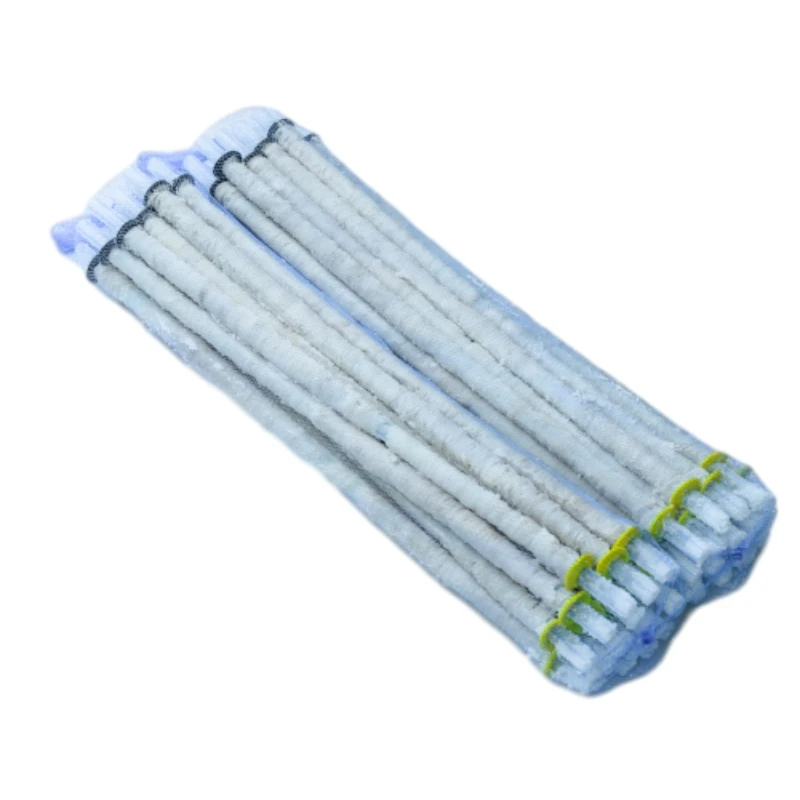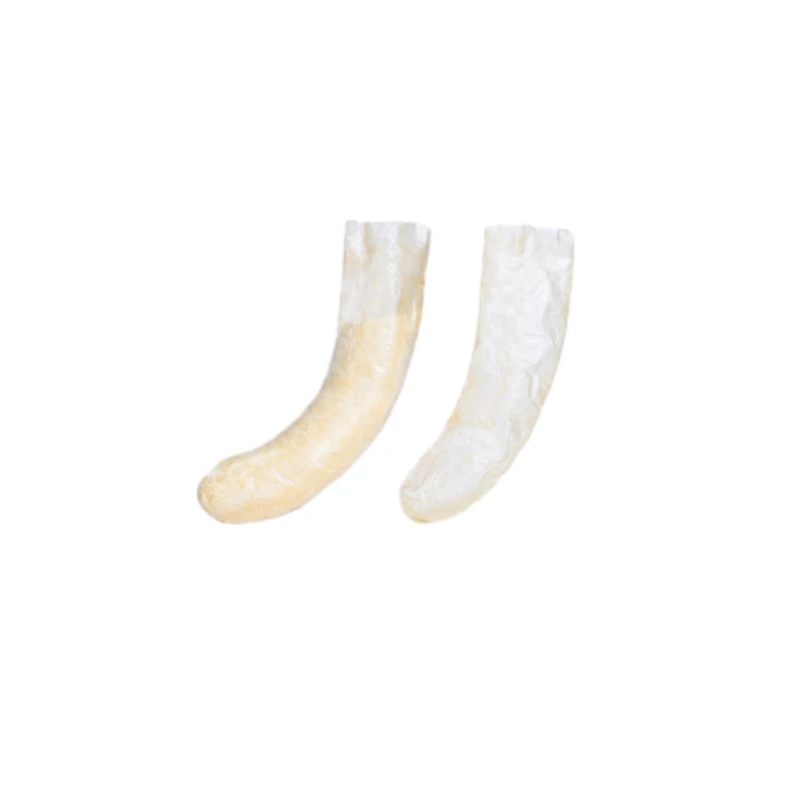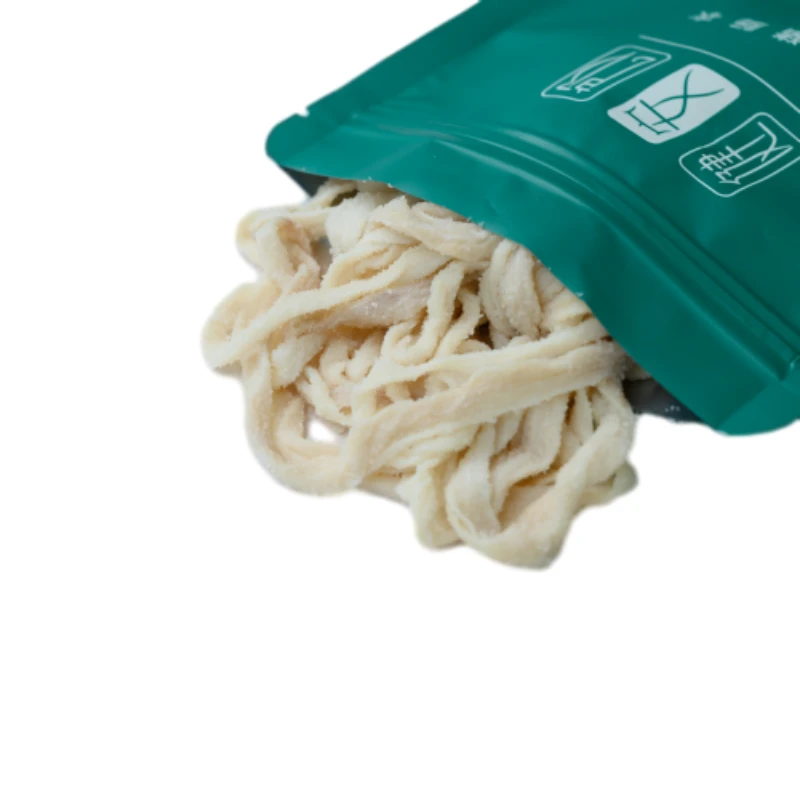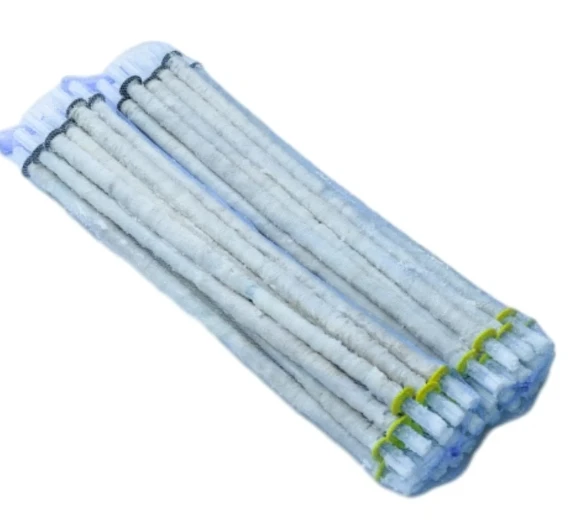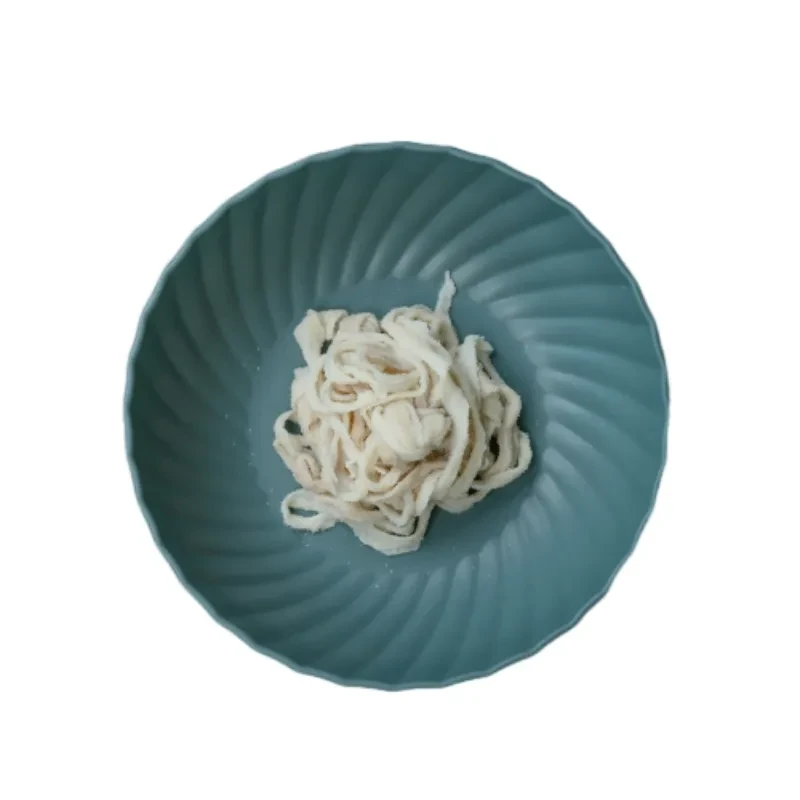Aug . 08, 2025 07:20
In the culinary world, particularly within the realm of charcuterie and meat processing, the choice of casing is paramount to the final product's texture, appearance, and overall quality. Among the myriad options available, natural casings stand out for their superior characteristics, offering an authentic mouthfeel and excellent flavor permeability that synthetic alternatives simply cannot replicate. This guide delves deep into the specific advantages and proper usage of dried hog casing, a versatile and highly sought-after product for crafting a wide array of sausages. We will explore the industry trends shaping the demand for natural casings, provide detailed technical parameters, illustrate their application across various scenarios, highlight their inherent technical advantages, offer insights into choosing the right supplier, and present real-world application cases. Our focus on how to use dry sausage casing aims to equip both professional producers and enthusiastic home artisans with the knowledge to achieve exceptional results.
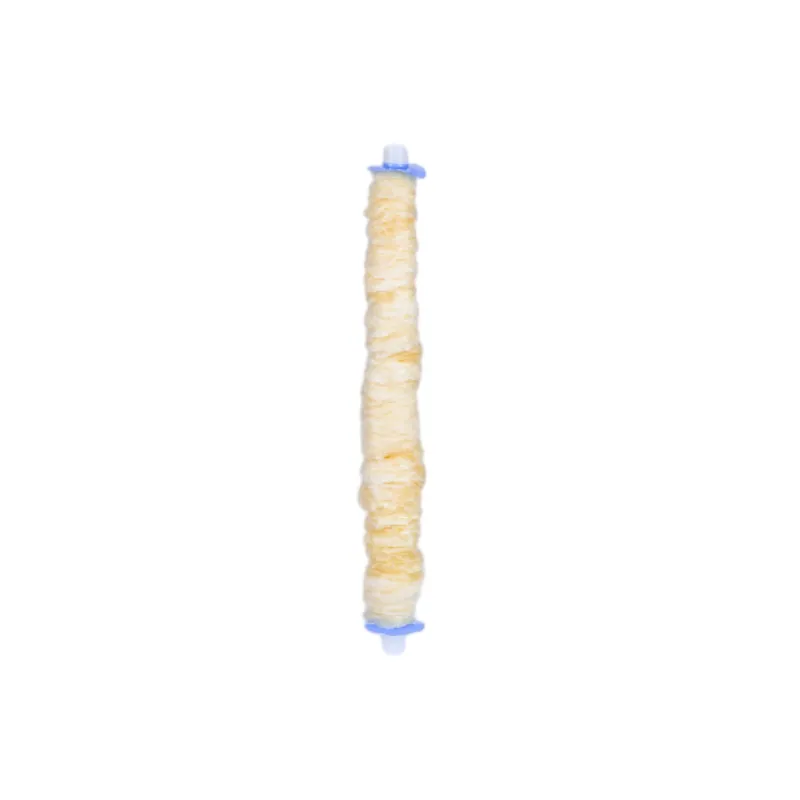
Industry Trends: The Resurgence of Natural and Authentic Food Products
The global food industry is currently experiencing a significant shift towards natural, authentic, and minimally processed ingredients. Consumers are increasingly discerning, seeking out products that offer transparency in their origin and preparation methods. This trend has fueled a renaissance in artisanal food production, including sausage making, where natural casings like dried hog casing are indispensable. According to a report by Grand View Research, the global natural sausage casing market size was valued at USD 1.7 billion in 2022 and is expected to expand at a compound annual growth rate (CAGR) of 4.5% from 2023 to 2030. This growth is largely driven by rising consumer preference for natural food ingredients, expanding meat consumption, and the growing popularity of processed meat products with traditional characteristics.
The demand for dried hog casings specifically reflects this trend. Their natural permeability allows for optimal smoke penetration and moisture loss during the drying or smoking process, critical for developing complex flavors and achieving the desired texture in products like pepperoni, salami, and various smoked sausages. Furthermore, the characteristic "snap" provided by natural casings contributes significantly to the sensory experience, a feature highly valued by connoisseurs. Producers are increasingly investing in high-quality natural casings to meet this demand, recognizing that superior ingredients translate directly into superior products. This commitment to authenticity ensures that consumers can enjoy sausages with a genuine texture and taste, much like those crafted in traditional European charcuterie houses for centuries.
Understanding Dried Hog Casing: Material and Preparation
Our product, Dried Hog Casing, sourced directly from the finest hog intestines, embodies the pinnacle of natural sausage casing quality. These casings are meticulously prepared to ensure optimal performance and food safety. The material, porcine small intestine, is naturally strong, elastic, and permeable, making it ideal for a wide range of sausage types. The intrinsic properties of the hog intestine, specifically its collagen structure, provide the unique "snap" and textural integrity highly prized in premium sausages. Unlike synthetic alternatives, natural casings are completely edible and contribute to the overall flavor profile through their interaction with the sausage filling and the surrounding environment during curing or smoking.
The Meticulous Process: From Raw to Ready-to-Use Dried Hog Casing
The journey of transforming raw hog intestines into premium dried hog casings is a sophisticated multi-step process that prioritizes cleanliness, integrity, and functional performance. Unlike industrial manufacturing processes such as casting or forging that apply to other materials, the preparation of natural casings is an intricate biological and manual endeavor, deeply rooted in centuries-old traditions yet enhanced by modern food safety protocols. Here’s a detailed breakdown of the typical stages involved:
Sourcing and Initial Cleaning
High-quality hog intestines are carefully sourced from approved abattoirs that adhere to stringent animal welfare and hygiene standards. Immediately after harvesting, the intestines undergo initial cleaning to remove contents and excess fat. This critical step sets the foundation for hygiene and casing quality, ensuring that only the purest raw material proceeds to the next stage. Rapid processing is key to maintaining freshness.
Sliming and Flushing
The intestines are then meticulously "slimed" – a process of removing the inner mucosal layer (mucosa) and outer serosal layer, leaving only the strong, clean sub-mucosal layer which forms the casing. This is often done mechanically using specialized equipment and manually to ensure thoroughness. Simultaneously, the casings are thoroughly flushed with clean, potable water to ensure all impurities are removed, preparing the casing for optimal functional performance.
Calibration and Grading
After thorough cleaning, the casings are precisely calibrated to determine their exact diameter (caliber). This automated and manual sorting ensures uniformity and consistency, which is crucial for predictable sausage production, especially in large-scale operations. Casings are then sorted into different grades based on quality, strength, elasticity, and specific application suitability (e.g., specific sausage types requiring certain strengths or permeabilities).
Salting (Curing)
The cleaned and graded casings are heavily salted using pure, food-grade salt, typically fine-grained for optimal penetration. This curing process is vital; it draws out moisture (acting as a desiccant), inhibits bacterial growth, and preserves the casings naturally. The salt also contributes to their flexibility and extends their shelf stability significantly, making them a safe and reliable product for global distribution.
Drying
Following the salting, the casings are carefully dried in controlled environments. This slow, regulated drying process further reduces moisture content, concentrating the casing's natural properties and making them suitable for long-term storage without refrigeration. This step is critical for producing dried hog casings, giving them their characteristic texture and long shelf life. The precise control over humidity and temperature during this phase is paramount to avoid brittleness or spoilage.
Packaging and Quality Control
Once dried to the optimal moisture level, the casings are measured, bundled into "hanks" (pre-measured lengths, typically 100 yards or 91.44 meters), and meticulously inspected for any defects such as perforations or weak spots. They are then vacuum-packed or packed in breathable bags designed to maintain their quality, prevent re-humidification, and extend their shelf life. Each batch undergoes rigorous quality control checks against internal specifications and external standards, including principles derived from HACCP (Hazard Analysis and Critical Control Points) and FDA (Food and Drug Administration) guidelines, ensuring product safety and performance.

Technical Parameters and Specifications of Dried Hog Casings
The quality and utility of dried hog casing are defined by several key technical parameters. Understanding these specifications is essential for selecting the right casing for your specific sausage application and ensuring consistent product output.
Our Dried Hog Casing product adheres to stringent quality controls, ensuring consistency and reliability for our customers. Here’s a typical specification overview, reflecting the meticulous attention to detail in their preparation:
| Parameter | Specification/Range | Benefits for Usage |
|---|---|---|
| Product Name | Dried Hog Casing | Natural, authentic sausage casing, superior texture and flavor integration. |
| Product URL | https://www.rtcasing.com/dried-hog-casing.html | Direct access to comprehensive product information, specifications, and ordering. |
| Caliber (Diameter) | 28mm - 40mm (e.g., 28/30mm, 30/32mm, 32/35mm, 35/38mm, 38/40mm) | Versatility for various sausage types (breakfast links, fresh Italian, smoked, cured salami). Consistent sizing ensures uniform product appearance and cooking/drying. |
| Length per Hank | Standard 91.44 meters (100 yards) per hank; available in bundles (e.g., 2 hanks, 5 hanks). | Standardized units facilitate easy inventory management, precise production planning, and minimize waste in large-scale operations. |
| Salt Content | Approx. 10-15% (Food Grade Salt, typically NaCl) | Primary natural preservative; extends shelf life significantly by inhibiting microbial growth. Requires rinsing before use. |
| Moisture Content | ≤ 20% (for fully dried); typically 15-18% for optimal flexibility. | Low moisture prevents spoilage during storage; ensures the casing's integrity and requires rehydration before use. |
| Shelf Life | 12-24 months when stored properly (cool, dry place, sealed packaging). | Long-term usability, reduces waste, and allows for efficient bulk purchasing for continuous production. |
| Origin | Primarily from regions known for high-quality hog farming (e.g., North America, select European/Asian countries). | Transparency in sourcing, ensuring compliance with international animal welfare and food safety standards. |
| Appearance | Pale white to translucent, consistent color, uniform thickness, flexible, free from perforations or weak spots. | Ensures aesthetic appeal of the final sausage product and prevents breakage during stuffing. |
| Odour | Characteristic mild, natural casing odour; free from off-odours or chemical smells. | Indicates freshness, proper processing, and absence of spoilage or contaminants. |
| Compliance | FDA compliant, manufactured adhering to HACCP principles, generally aligned with ISO 22000 for food safety management. | Guarantees food safety, legality for international markets, and adherence to rigorous quality standards. |
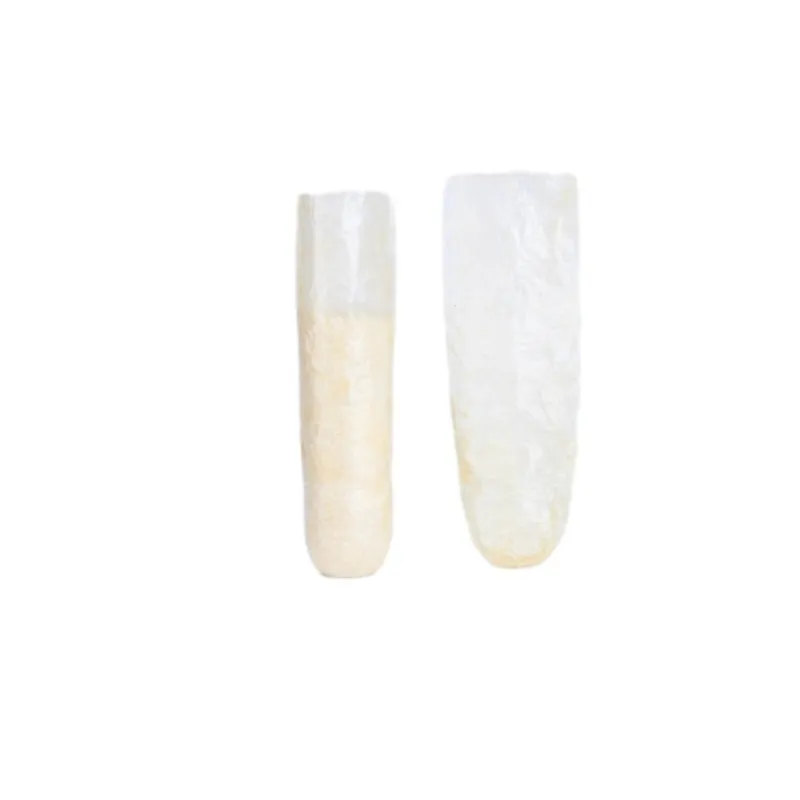
Technical Advantages of Dried Hog Casing
The superior attributes of natural hog casings, especially in their dried and carefully prepared form, offer unparalleled advantages over synthetic alternatives in sausage production. These benefits contribute directly to a premium final product that satisfies discerning consumers and ensures operational efficiency for producers:
- Exceptional Permeability: Natural casings "breathe," meaning they allow for optimal moisture exchange and smoke penetration during drying, curing, or smoking processes. This is absolutely crucial for developing complex, deep flavors and achieving the desired texture in artisanal sausages like salamis, pepperoni, and various cured chorizos. This controlled moisture loss is essential for food safety in dry-cured products.
- Superior "Snap": The characteristic bite or "snap" of a sausage made with a natural casing is a hallmark of quality and authenticity. This unique, satisfying texture, a result of the casing's natural collagen structure, cannot be replicated by synthetic casings and is a significant differentiator for gourmet and traditional meat products.
- Natural Appearance & Appeal: Dried hog casings provide a traditional, rustic look to sausages, enhancing their visual appeal and authenticity. The slight imperfections and natural variations add to the artisanal charm, appealing to consumers looking for genuine, less processed foods.
- Flavor Absorption and Enhancement: Unlike inert synthetic casings, natural casings naturally absorb and subtly enhance the complex flavors of the sausage mixture. During the smoking or curing process, they interact with the meat and spices, contributing to a richer, more integrated taste profile that evolves over time.
- Versatility Across Applications: Available in a wide range of precisely calibrated calibers, dried hog casings are suitable for a diverse array of sausage types. From thin breakfast links and fresh bratwurst to thick, fermented salamis and smoked sausages, there's a hog casing caliber to fit virtually every need.
- Food Safety and Authenticity: Being a natural, minimally processed product, they perfectly align with contemporary clean label trends and strong consumer demand for genuine, traditional ingredients. Our casings are rigorously processed to meet stringent international food safety standards, including full FDA compliance and adherence to HACCP principles, ensuring both safety and authenticity.
- Economic Efficiency for Curing: For producers of dry-cured sausages, the ability of dried hog casings to facilitate consistent and uniform drying and fermentation cycles minimizes product loss due to uneven moisture or spoilage. This consistent performance ultimately maximizes yield and reduces waste, leading to long-term cost benefits and a reliable product.
How to Use Dry Sausage Casing: A Step-by-Step Guide for Optimal Results
Using dried hog casings effectively requires a specific and careful preparation process to rehydrate them from their preserved state and make them pliable, strong, and easy to stuff. This detailed guide on how to use dry sausage casing will ensure optimal results, whether you're a seasoned professional in a large facility or an enthusiastic home sausage artisan.
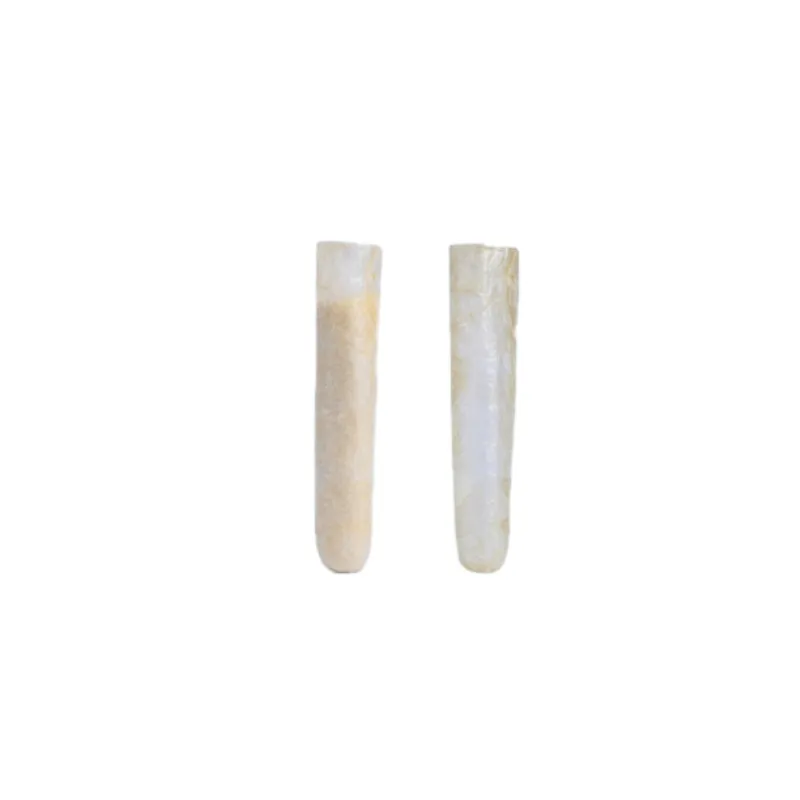
Step 1: Rehydration – The Crucial First Phase
Proper rehydration is the most critical step. Insufficient rehydration will result in brittle casings that are prone to tearing, leading to frustration and product loss. This process restores the casing's natural elasticity and pliability.
- Initial Rinse & Separating Bundles: Begin by taking the hank of dried hog casing and gently separating the individual bundles or "strands" if they are tied together. Rinse these bundles thoroughly under cool, running water. This removes the initial layer of preserving salt and any loose debris. Do not attempt to separate individual casing strands at this point.
- First Soak in Cold Water (2-4 hours or Overnight): Place the rinsed bundles into a large bowl filled with abundant cold water. Allow them to soak for a minimum of 2-4 hours. For optimal results, especially with thicker or very dry casings, soaking them overnight (8-12 hours) in the refrigerator is highly recommended. This slow and gradual rehydration process allows the casing walls to evenly absorb moisture, regaining their full elasticity without becoming overly fragile or sticky. Change the water at least once if soaking for an extended period.
- Warm Water Flush (Immediately Before Use): Just before you are ready to stuff your sausages, take the now rehydrated, pliable bundles. Carefully separate an individual strand of casing. Find one end of the casing and open it. Then, gently flush warm (not hot!) water through its entire length, from one end to the other. This step is crucial for several reasons: it thoroughly rinses away any remaining salt from the inside of the casing, further softens the casing walls, and makes it much easier to slide onto the stuffing horn. The water temperature should be comfortable to the touch, ideally around 30-40°C (86-104°F). If the water is too hot, it can 'cook' the collagen, making the casing brittle.
- Optional: Wine or Vinegar Rinse (for flavor nuance): Some experienced professionals and home cooks prefer to soak the rehydrated casings in a very dilute solution of white wine or vinegar (e.g., 1 part distilled white vinegar to 10-20 parts water) for the last 30 minutes of rehydration. This can subtly tenderize the casing and help neutralize any residual "casing smell," though our premium dried hog casings typically have a very mild, natural odor from the outset. This step is entirely optional and depends on your desired flavor profile.
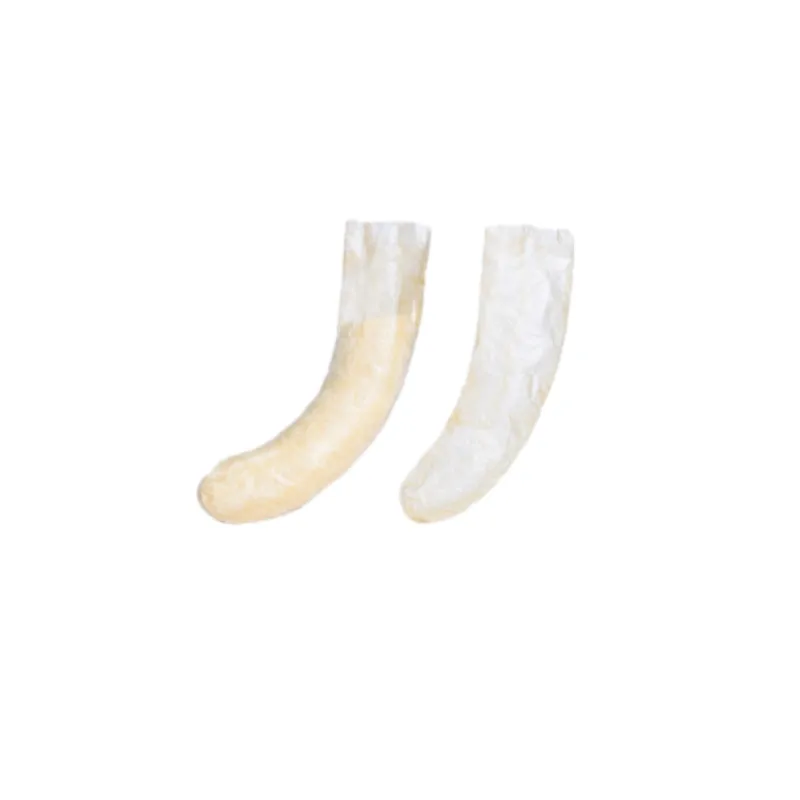
Step 2: Preparing for Stuffing
Once your dried hog casings are properly rehydrated, the next steps involve preparing them for the sausage stuffing machine.
- Choose the Right Stuffing Horn/Nozzle: Select a stuffing horn or nozzle that closely matches the caliber of your dried hog casing. A horn that is too small will make stuffing incredibly difficult, leading to excessive friction, air pockets, and potential tears. Conversely, a horn that is too large will not allow the casing to hold firmly, making it hard to control the fill. Aim for a horn that is slightly smaller than the casing's rehydrated diameter.
- Loading the Casing onto the Horn: Take one end of a rehydrated, flushed casing strand. Gently gather and slide the entire length of the casing onto the stuffing horn, pleating it as you go. Continue to push the casing onto the horn until the entire strand is loaded, leaving approximately an inch or two hanging off the end of the horn. Ensure there are no twists, knots, or tangles in the casing as you load it, which can cause blockages or tears during stuffing.
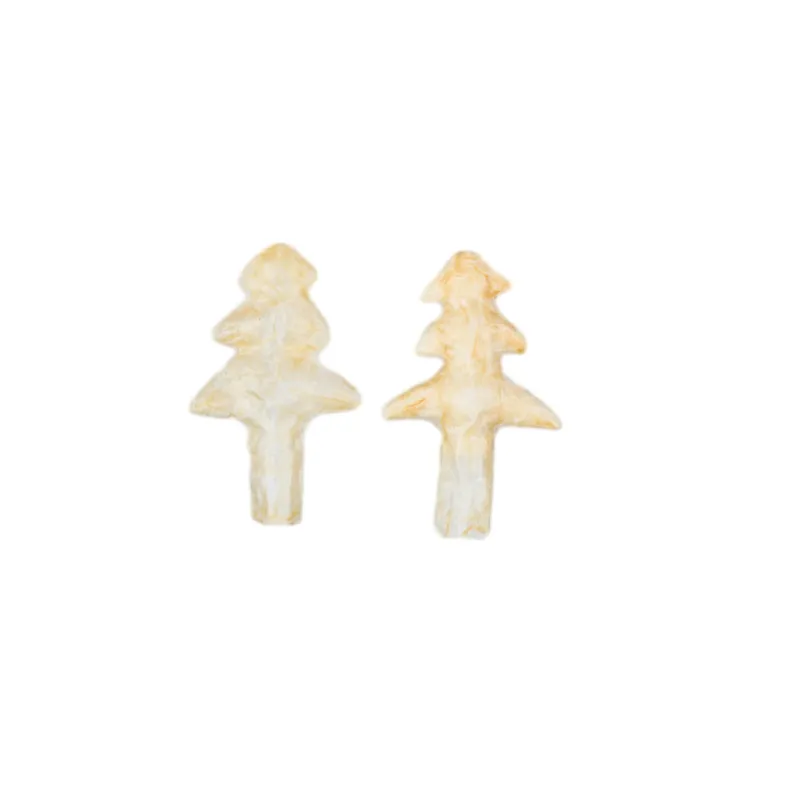
Step 3: Stuffing the Sausage
The actual stuffing process requires a balance of speed, pressure, and observation to create perfectly filled sausages.
- Apply Even Pressure: Begin stuffing your prepared sausage mixture into the casing. Apply steady, even pressure to the stuffer's plunger (for manual stuffers) or regulate the speed (for electric stuffers). The goal is to fill the casing uniformly without creating large air pockets or, critically, over-stuffing, which will inevitably lead to bursting during linking or cooking. A well-stuffed sausage should be firm but still have a little give when gently squeezed.
- Managing Air Pockets: As the casing fills with meat, carefully watch for any trapped air pockets. If you see one, gently prick the casing with a sterilized sausage pricker or a very fine needle to release the trapped air. This prevents unsightly bulges, ensures uniform drying/cooking, and most importantly, prevents potential spoilage from oxygen exposure within the sausage.
- Controlling Casing Flow: Use your non-stuffing hand to gently control the flow of casing off the horn. This hand guides the casing as it fills with meat, ensuring it doesn't bunch up or pull too taut. The technique involves letting the casing slide off smoothly while maintaining gentle tension.
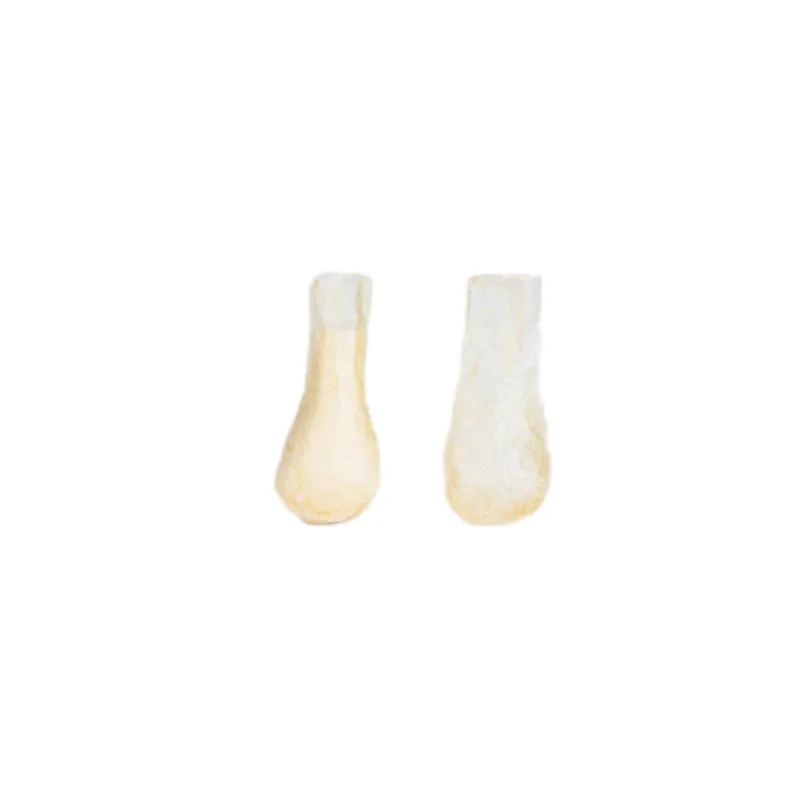
Step 4: Linking and Finishing
Once filled, your sausage can be formed into individual links, prepared for cooking, smoking, or curing.
- Creating Links: After the entire casing is filled, or you reach a desired length, you can create individual sausage links. Pinch the filled casing at your desired interval (e.g., 4-6 inches for most links). Twist the casing at this point. For beginners, it's often easier to twist in alternating directions (e.g., twist the first link clockwise, then twist the next link counter-clockwise) to lock them securely in place. Consistency in link size is a sign of mastery.
- Tying Off Ends: Tie off the very ends of the sausage string or casing with butcher's twine to completely secure the meat mixture within. You can also create a loop for hanging if the sausages are destined for smoking or drying.
- Post-Stuffing Handling: For fresh sausages, they are now ready for cooking, immediate refrigeration, or freezing. For cured or smoked sausages, proceed directly to the recipe's instructions for drying, smoking, or fermentation stages. The natural permeability of dried hog casing is particularly beneficial and necessary for these extended processes, allowing the sausage to breathe, absorb smoke, and lose moisture effectively.
Expert Tip for Storage: Always keep any unused rehydrated casings submerged in clean, cold, lightly salted water (brine) in a sealed container111 in the refrigerator. They can typically be stored this way for 3-5 days. For long-term storage of unopened dried hog casings, keep them in their original sealed packaging in a cool, dry place away from direct sunlight; they do not require refrigeration and boast a significantly longer shelf life.
Application Scenarios and Product Superiority
The versatility and inherent qualities of Dried Hog Casing make it the preferred choice for a broad spectrum of sausage applications, appealing to diverse culinary traditions and production scales, from home kitchens to large processing plants. Our product's superiority stems from its consistent performance across these varied uses:
- Fresh Sausages: Ideal for daily consumption sausages such as breakfast links, traditional Italian sausages, German bratwurst, and classic British bangers. The casing's natural strength and elasticity prevent bursting during cooking (grilling, frying, boiling) and provide that satisfying, signature "snap" with every bite, a hallmark of quality.
- Smoked Sausages: For products like kielbasa, frankfurters, various smoked links, and artisan smoked chorizos, the casing's unparalleled permeability is crucial. It allows for excellent, uniform smoke penetration, imparting rich flavor and a desirable smoky color to the meat. This controlled interaction ensures a deeply flavored and aromatic end product.
- Dry-Cured Sausages: This is where dried hog casings truly shine. They are indispensable for products like salamis, pepperoni, dry-cured chorizos, and other fermented and air-dried sausages. The natural casing facilitates controlled moisture loss, uniform drying from the exterior to the core, and proper bacterial fermentation. These processes are essential for the development of complex, nuanced flavors and specific textures, while also playing a vital role in the food safety of dry-cured meats by promoting correct pH drops and water activity levels.
- Artisanal and Small-Batch Production: Small-scale producers, gourmet delis, and passionate home sausage makers consistently rely on the consistent quality and authentic performance of dried hog casings. They enable the creation of high-quality, authentic products that stand out in the market for their traditional characteristics and superior sensory appeal.
- Food Service and Retail: Used extensively by restaurants, high-end delis, specialty meat shops, and butchers who emphasize natural ingredients, traditional craftsmanship, and a premium customer experience. The visual appeal and eating quality of sausages made with natural casings elevate the perceived value.
Our commitment to quality means that our dried hog casings consistently outperform in terms of durability, elasticity, and uniform caliber, significantly reducing breakage during stuffing and ensuring a professional, appealing finish. This directly translates to reduced product loss, increased operational efficiency, and ultimately, higher profitability for our clients. We understand that the casing is not just a container111; it's an integral part of the sausage's identity and quality.
Ensuring Quality and Trust: Our Commitment to Excellence ( Focus)
Expertise and Experience in Casing Production
With decades of dedicated experience in the natural casing industry, RTCasing has cultivated a profound and comprehensive understanding of every aspect of dried hog casing production, quality assurance, and practical application. Our team is comprised of seasoned industry veterans, skilled technicians, and food technologists who bring unparalleled expertise to the sourcing, meticulous processing, and rigorous quality assurance of our products. We possess an in-depth understanding of the nuanced characteristics of casing properties—from precise permeability and robust tensile strength to consistent collagen integrity and optimal elasticity—and critically, how these intricate factors directly impact the final sausage product's texture, flavor development, and shelf stability.
Our extensive hands-on experience extends beyond mere supply; we actively advise clients on optimal casing selection for their specific recipes, best practices for rehydration techniques, and efficient stuffing methodologies. We routinely assist in troubleshooting common challenges faced by sausage makers, such as casing breakage or uneven drying, and provide tailored solutions to maximize their yield and product quality. For example, we collaborated with a leading regional charcuterie producer who was experiencing inconsistent drying rates and excessive shrinkage in their premium cured sausages. By transitioning them to our meticulously graded dried hog casings and implementing our recommended controlled drying protocols, they achieved a remarkable 20% improvement in product uniformity, significantly reduced drying time by 15%, and effectively minimized product waste. This partnership resulted in substantial cost savings and a marked enhancement in their product's market appeal.
Authoritativeness: Industry Certifications and Partnerships
RTCasing's authoritative standing in the natural casing market is firmly underpinned by our rigorous adherence to global food safety and quality standards, and our strategic industry partnerships. Our state-of-the-art processing facilities operate under strict HACCP (Hazard Analysis and Critical Control Points) principles, ensuring a systematic, proactive, and preventative approach to identifying and controlling food safety hazards at every stage of production. All our products, including our premium dried hog casings, are fully compliant with major international food regulatory bodies, notably the FDA (U.S. Food and Drug Administration) for seamless market entry into the United States, unequivocally affirming their safety and superior quality for human consumption.
While specific ISO product certifications are generally covered by our comprehensive HACCP and Good Manufacturing Practices (GMP) frameworks, our operational processes are meticulously designed in alignment with ISO 22000 (Food Safety Management System) principles. This ensures robust traceability from source to package, impeccable hygiene protocols, and a continuous commitment to improvement throughout our entire supply chain. Furthermore, we maintain strong, long-standing, and transparent partnerships with only certified abattoirs globally, guaranteeing a consistent supply of ethically sourced, high-quality raw materials that meet both our stringent internal standards and international benchmarks for sustainability and animal welfare. Our reputation is built on trust and consistent delivery of excellence.



Trustworthiness: Unwavering Customer Support and Quality Assurance
Our commitment to trustworthiness extends far beyond the quality of our product to encompass comprehensive customer support and transparent business practices. We understand that purchasing dried hog casings is an investment in your product's quality, and we are dedicated to supporting your success:
- Detailed Product Information and Resources: We provide accessible and comprehensive product information directly through our website, including specific technical parameters, detailed usage guidelines, and expert tips on how to use dry sausage casing. Our goal is to empower our customers with the knowledge they need.
- Responsive and Expert Customer Service: Our dedicated customer support team comprises individuals with deep product knowledge. They are readily available to answer all your questions regarding product selection, rehydration techniques, optimal storage solutions, and any troubleshooting inquiries you may have. We pride ourselves on providing prompt, accurate, and helpful assistance.
- Clear and Efficient Delivery Cycle: We maintain highly efficient logistics and supply chain management to ensure timely and reliable delivery of all orders. Typical lead times are communicated upfront, based on order size, destination, and current stock levels, allowing you to plan your production schedules with confidence.
- Unwavering Quality Guarantee: All our products are backed by a steadfast satisfaction guarantee. In the rare event of a quality issue, we are committed to providing prompt resolution, whether through replacement or credit. Our casings undergo multi-stage, stringent inspections before packaging, ensuring that only premium, defect-free products reach our valued customers. We stand by the quality of every hank we ship.
Data Visualization: How to Use Dry Sausage Casing - Key Parameters & Usage Tips
To further aid in your sausage-making endeavors and provide quick reference for optimizing your process, here's a consolidated table of key parameters and usage tips, addressing common user queries and enhancing your understanding of dried hog casing functionality and best practices.
| Parameter/Aspect | Optimal Usage & Considerations | Impact on Final Product & Process Efficiency |
|---|---|---|
| Rehydration Time | Minimum 2-4 hours in cold water; ideally 8-12 hours (overnight) for maximum elasticity. Warm water flush just before use. | Ensures optimal pliability and strength, significantly reducing tearing during stuffing. Inadequate rehydration leads to brittle, unworkable casings and product loss. |
| Water Temperature for Flush | Lukewarm (approx. 30-40°C / 86-104°F); critically, NEVER use hot or boiling water. | Softens the casing further for easy loading without damaging the natural collagen structure. Hot water can 'cook' the casing, making it fragile and unusable. |
| Stuffing Pressure | Firm and consistent, but avoid overstuffing. Sausage should feel 'full' but still have a slight, gentle give when squeezed. | Prevents bursting during stuffing, cooking, or smoking. Allows for proper moisture loss and even cooking/drying; too loose leads to undesirable air pockets and uneven curing. |
| Air Removal during Stuffing | Systematically prick any visible trapped air bubbles with a sterile sausage pricker or a very fine needle. | Ensures uniform filling, even drying/cooking, and prevents unsightly bulges. Crucial for inhibiting spoilage and mold growth in cured products. |
| Storage (Unused Dried Casings) | Store in a cool, dry place (e.g., pantry or cellar) away from direct sunlight, in their original sealed, airtight packaging. No refrigeration required. | Maintains an extended shelf life (12-24 months), preserving quality and preventing premature moisture absorption or spoilage. |
| Storage (Rehydrated Unused Casings) | Submerge completely in fresh, clean, lightly salted water (brine) in a sealed container111 and refrigerate (4°C / 40°F or below) for up to 3-5 days. Change brine daily. | Keeps casings moist, pliable, and ready for immediate next use while inhibiting bacterial growth. |
| Caliber Matching | Carefully match casing diameter to the specific type of sausage being made (e.g., thinner calibers for breakfast links, thicker for large salamis). | Ensures appropriate portion size, consistent cooking/drying times, and the desired traditional appearance for the final product. |
| Flavor Transfer & Permeability | The natural, porous structure allows for superior absorption of smoke, spices, and fermentation cultures. | Achieves rich, authentic, and complex flavors in smoked, fermented, and cured sausages that synthetic casings cannot replicate. Critical for charcuterie development. |
| Uniform Shrinkage | Natural casings shrink uniformly and naturally with the meat emulsion during drying, curing, or cooking. | Minimizes undesirable fat cap formation, prevents air pockets between casing and meat, resulting in a dense, cohesive, and visually appealing final product with excellent mouthfeel. |
Professional FAQ: Deep Dive into Dried Hog Casing
A1: Dried Hog Casings are made from the sub-mucosal layer of the small intestine of hogs. This specific layer is composed primarily of natural collagen, a protein that provides exceptional strength, elasticity, and controlled permeability. It is highly preferred due to its authentic "snap" when bitten, its ability to allow for proper moisture exchange and smoke penetration during processing, and its edible nature, contributing to the overall quality and sensory experience of the sausage.
A2: Caliber, or gauge, refers to the diameter of the casing and is a critical specification. It directly influences the size, shape, and overall yield of your sausage, as well as its subsequent cooking or drying time. Smaller calibers (e.g., 28/30mm) are ideal for breakfast links, frankfurters, or snack sticks, which require shorter processing times. Larger calibers (e.g., 38/40mm) are suited for heavier, cured products like salamis or large smoked sausages that undergo extended drying. Selecting the correct caliber ensures consistent product dimensions, optimizes processing efficiency, and achieves the desired traditional look and feel.
A3: Key quality control and inspection standards for dried hog casings typically involve comprehensive visual inspection for cleanliness, integrity (absence of perforations, weak spots, or tears), and consistency in diameter and length within a given hank. Beyond visual checks, rigorous laboratory testing ensures compliance with critical food safety regulations, including FDA (Food and Drug Administration) guidelines, and adherence to HACCP (Hazard Analysis and Critical Control Points) principles. Additionally, parameters such as precise salt content, optimal moisture content, and microbial load are meticulously tested to guarantee proper preservation, functional performance, and absolute food safety.
A4: When stored correctly in a cool (below 20°C or 68°F), dry place away from direct sunlight and in its sealed, original airtight packaging, dried hog casing can boast an impressive shelf life of 12 to 24 months. Importantly, it does not require refrigeration in its dried, salted state. Once the original packaging is opened or the casings are rehydrated, any unused portions should be immediately submerged in a clean, lightly salted brine solution (e.g., 1 tablespoon salt per cup of water) within a sealed container111 and refrigerated (at or below 4°C / 40°F). Stored this way, they can remain viable for approximately 3-5 days; changing the brine daily is recommended for optimal freshness.
A5: Absolutely, dried hog casings are incredibly versatile and are optimally suited for a broad spectrum of sausage applications. Their natural properties, including robust strength and controlled permeability, make them excellent for fresh sausages that will be cooked immediately (e.g., breakfast sausages, Italian sausages), preventing bursting during heating. Simultaneously, these very same properties are indispensable for smoked, fermented, and dry-cured sausages (like salamis, pepperoni, and various chorizos), where precise moisture loss, uniform drying, and proper smoke absorption are critically important for complex flavor development, texture, and long-term preservation.
A6: The "snap" refers to the highly desirable, satisfying crispness and slight audible resistance a sausage casing provides when bitten into. This unique textural attribute is a hallmark of high-quality natural casings, particularly dried hog casings, and is greatly valued by discerning consumers as a sign of authenticity and quality. It is primarily attributed to the inherent collagen structure of the casing and its ability to firm up and become taut during the cooking or drying process, creating that perfect, pleasing break upon biting.
A7: Rehydration is unequivocally the most critical preliminary step when working with dried hog casings. Improper or insufficient rehydration can lead to severely negative consequences: the casings will remain brittle, lack necessary elasticity, and be highly prone to tearing or bursting during the stuffing process, resulting in significant product waste and production inefficiencies. Conversely, proper rehydration meticulously restores the casing's natural elasticity, pliability, and strength, making it robust and flexible enough to withstand the mechanical stresses of the stuffing process and subsequent cooking or curing cycles without compromising its integrity.
By diligently following the comprehensive guidelines on how to use dry sausage casing, you are not just making sausages; you are engaging in a time-honored culinary tradition that celebrates natural ingredients, artisanal craftsmanship, and superior taste. Our Dried Hog Casing product is meticulously prepared and rigorously quality-controlled to empower you to achieve consistent, professional-grade, and truly exceptional results every time, elevating your sausage production to an art form.
Further Reading and Resources
For those interested in delving deeper into the science, art, and business of sausage making and natural casings, the following authoritative resources provide invaluable insights and extended knowledge:
- The National Center for Home Food Preservation - University of Georgia: An excellent, research-based public resource offering extensive, practical information on home food preservation techniques, including detailed sections on sausage making, casing handling, and food safety protocols.
- Meat Science.org: An academic and industry portal that serves as a rich repository of information on meat science, processing technologies, and food safety. This site often features peer-reviewed articles and research findings relevant to the properties and applications of various casings.
- American Meat Science Association (AMSA): A prominent professional organization dedicated to advancing meat science. AMSA provides comprehensive educational resources, cutting-edge research findings, and industry standards that frequently touch upon the functional properties, processing, and diverse applications of natural casings within the meat industry.
- Reputable Industry Forums (e.g., Sausage Making Forum, Smoking Meat Forums): Vibrant online communities where both seasoned professionals and enthusiastic hobbyists share practical tips, engage in troubleshooting discussions, exchange innovative recipes, and discuss the optimal uses for various casings, including dried hog casings. These forums provide an invaluable source of real-world, peer-to-peer experience and insights into contemporary sausage making practices.
Citations & References:
- Grand View Research. (2023). Natural Sausage Casing Market Size, Share & Trends Analysis Report By Application (Fresh Sausage, Dry Sausage), By Region (North America, Europe, Asia Pacific, Latin America, MEA), And Segment Forecasts, 2023 - 2030. Retrieved from: https://www.grandviewresearch.com/industry-analysis/natural-sausage-casing-market
- U.S. Food and Drug Administration (FDA). Guidance Documents & Regulatory Information. Retrieved from: https://www.fda.gov/food/guidance-documents-regulatory-information
- International Organization for Standardization (ISO). ISO 22000 Food safety management. Retrieved from: https://www.iso.org/iso-22000-food-safety.html


